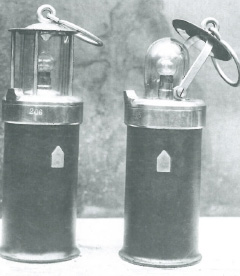We already described the manufacture of electrode plates in the articles listed on the right. And now let's stack them in a staggered fashion, i.e. positive, negative, positive and so on, with a separator made of non-woven polypropylene fibers or polypropylene grids between the plates. The number of electrodes that form a Ni-Cd cell varies based on its required capacity.
As the stack grows, a negative and a positive pole pin or terminal is connected to it. The assembly is then inserted into the case, onto which the lid is fitted and the terminals coming out of it are sealed by tightening the nuts on these pins. Now the cell only needs to be revived by pouring electrolyte into it and charging it. Which is, however, a more complex process than it first appears. It's called formation, and its purpose is essentially to activate the electrodes.
Born from overcurrent
During formation, the cell is repeatedly overcharged which forces the nickel active mass to restructure into a non-stoichiometric composition, making the otherwise dense ensemble of atoms more permeable for ions to flow from a to the electrode. After the first overcharge, the battery is discharged, and the electrolyte poured out which also washes away impurities and residues from the manufacturing process. By the way, the leftover potassium hydroxide (KOH) solution is filtered and used again. But only for the first stage of the formation of the next cell, the batteries shipped to customers are filled with freshly prepared electrolyte.
The empty or dry cell is then filled with electrolyte and charged once again, with the second cycle proceeding in the same way as the first. After this, another charging follows after which the cell is filled with electrolyte which, apart from KOH, also contains the necessary additives such as lithium hydroxide (LiOH). Now the charged cell is ready to be shipped to the customer. Unless, during a random quality check of the given batch, it is the one that is selected for a thorough analysis in the laboratory.
At the same time, it is possible that a particular customer may want to receive the batteries dry, for example because they plan to store them for a longer period of time. Or for safety reasons because the batteries need to be transported by air. In these cases, the customer receives the batteries empty and uncharged. The commissioning is then taken care of by the customer. In any case, the battery will work for 15 or even 20 years without any significant maintenance, as exceptional reliability and ruggedness is what truly sets Ni-Cd apart from any other chemistry.
Filled and charged, Ni-Cd cells may be stored for months only, typically half a year, and in tropical climates even less. If the cells must be stored for a longer period of time, then they require a commissioning charge every six or so months. However, when discharged and drained of electrolyte, Ni-Cd cells may be stored indefinitely without further treatment.
|






